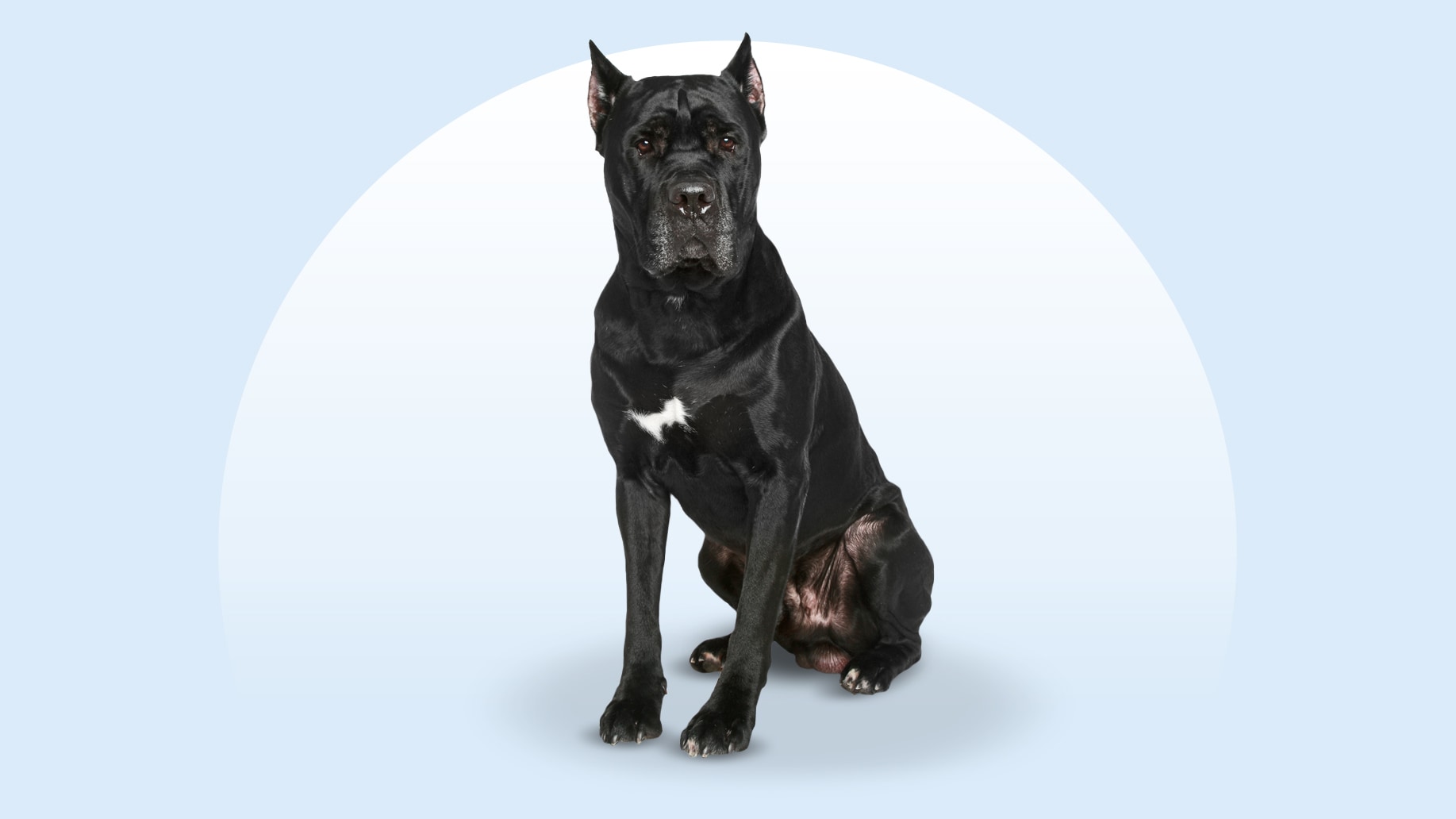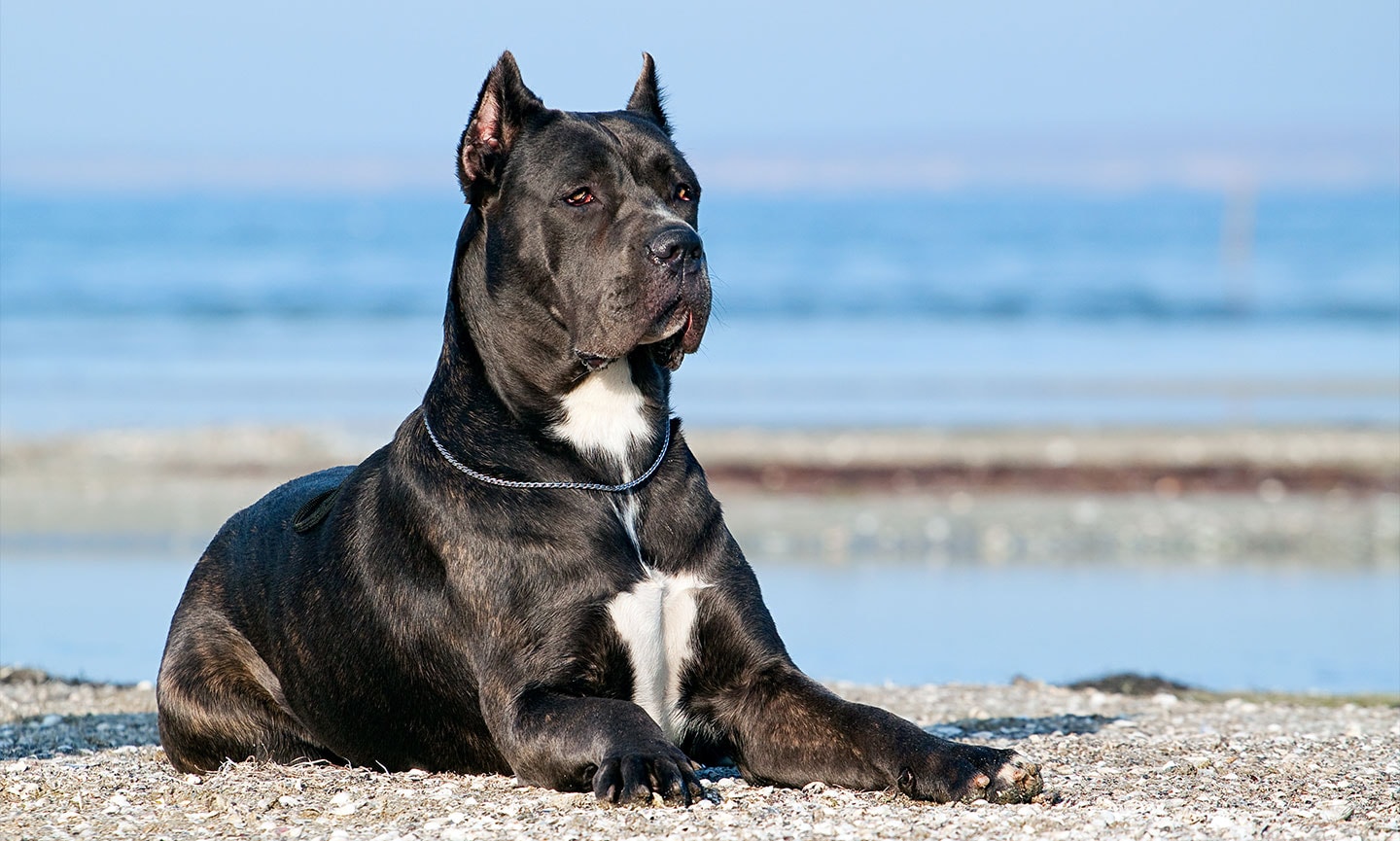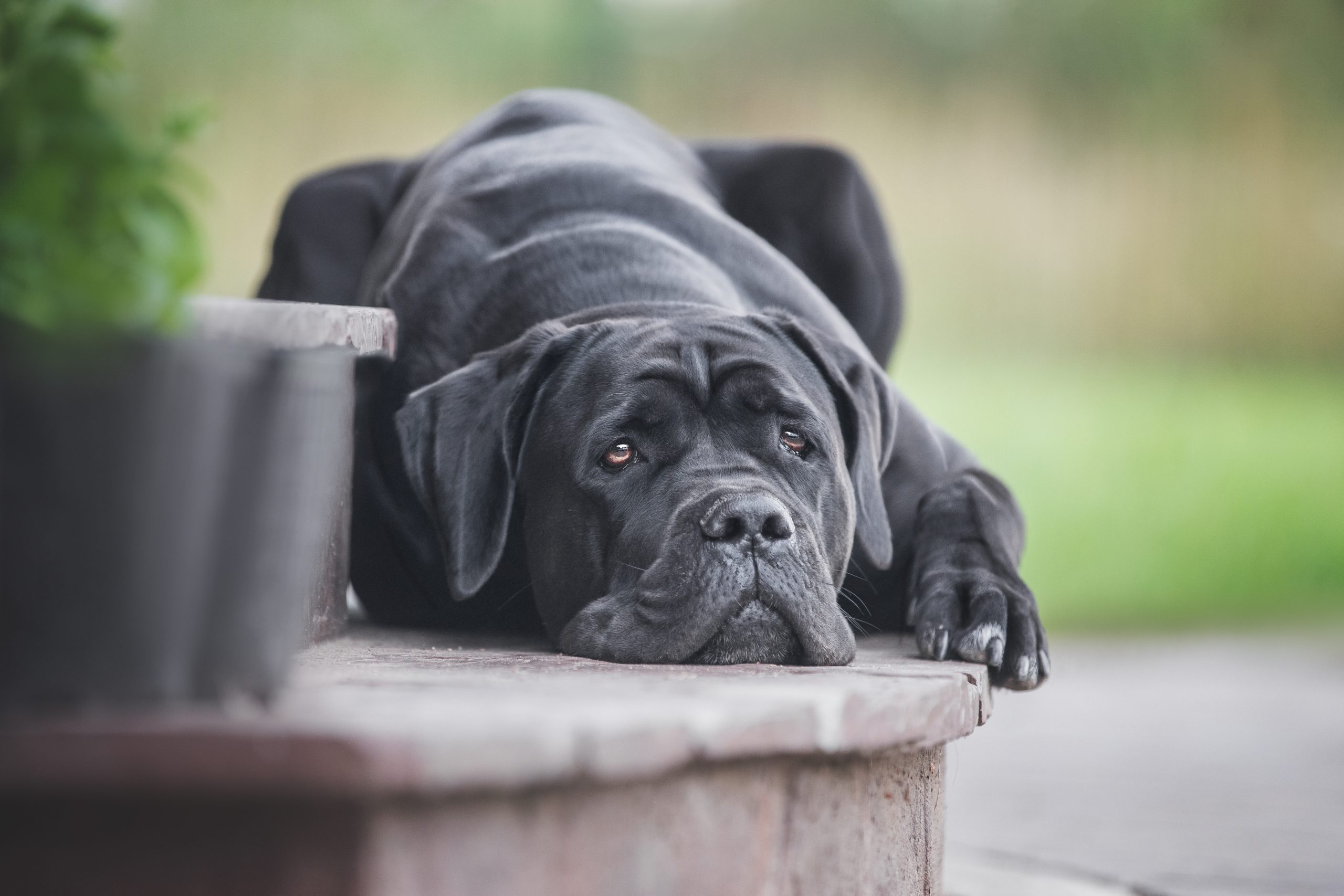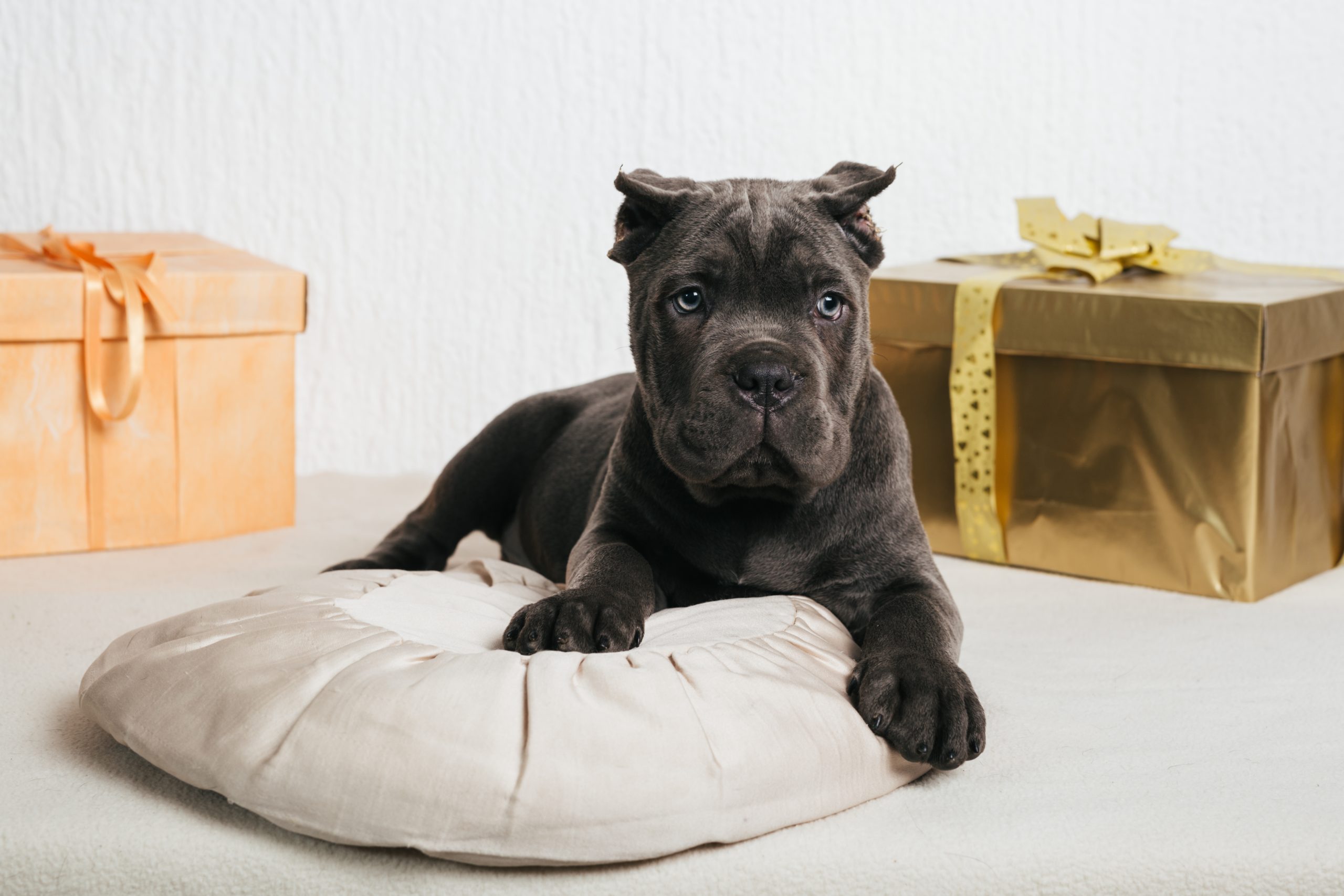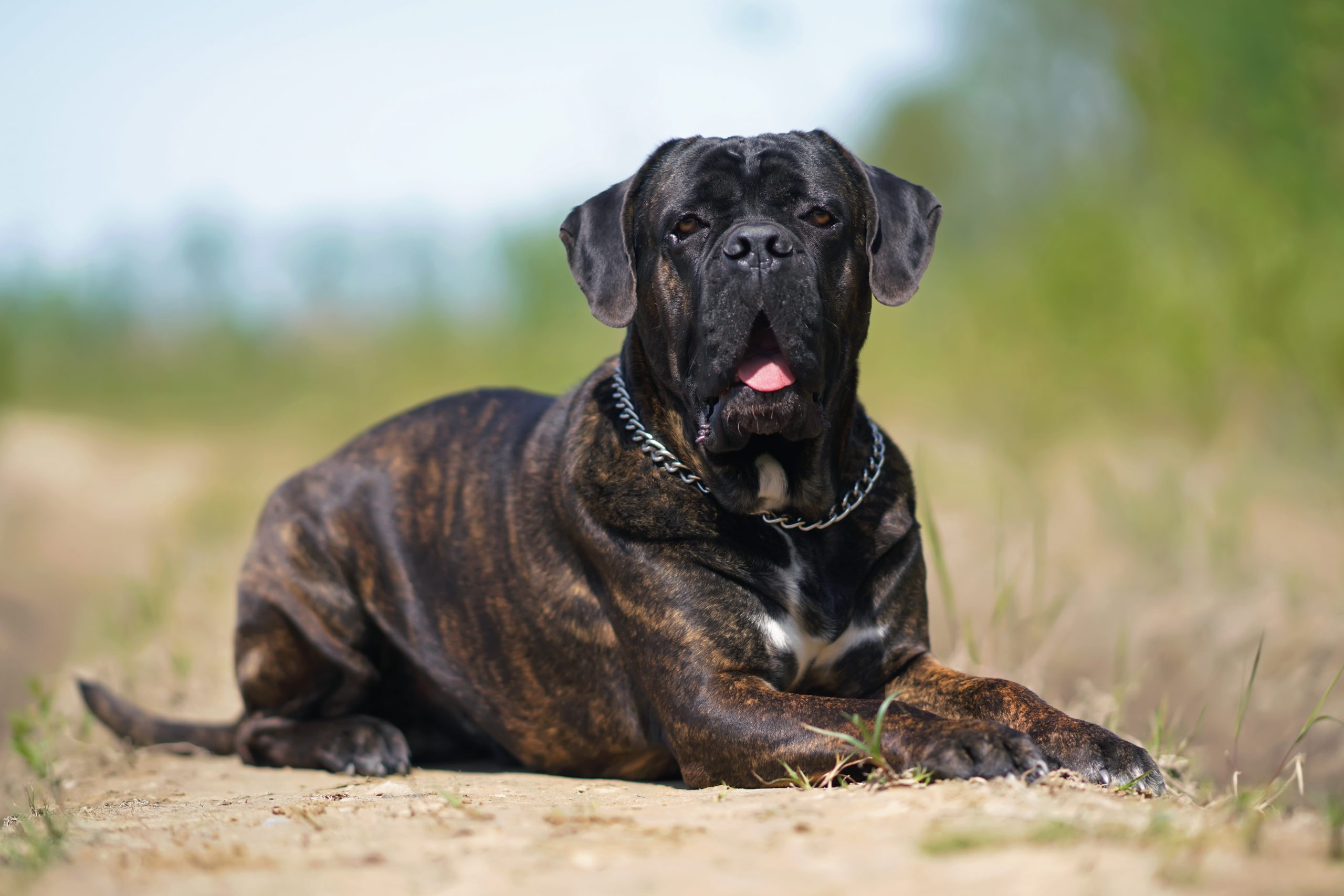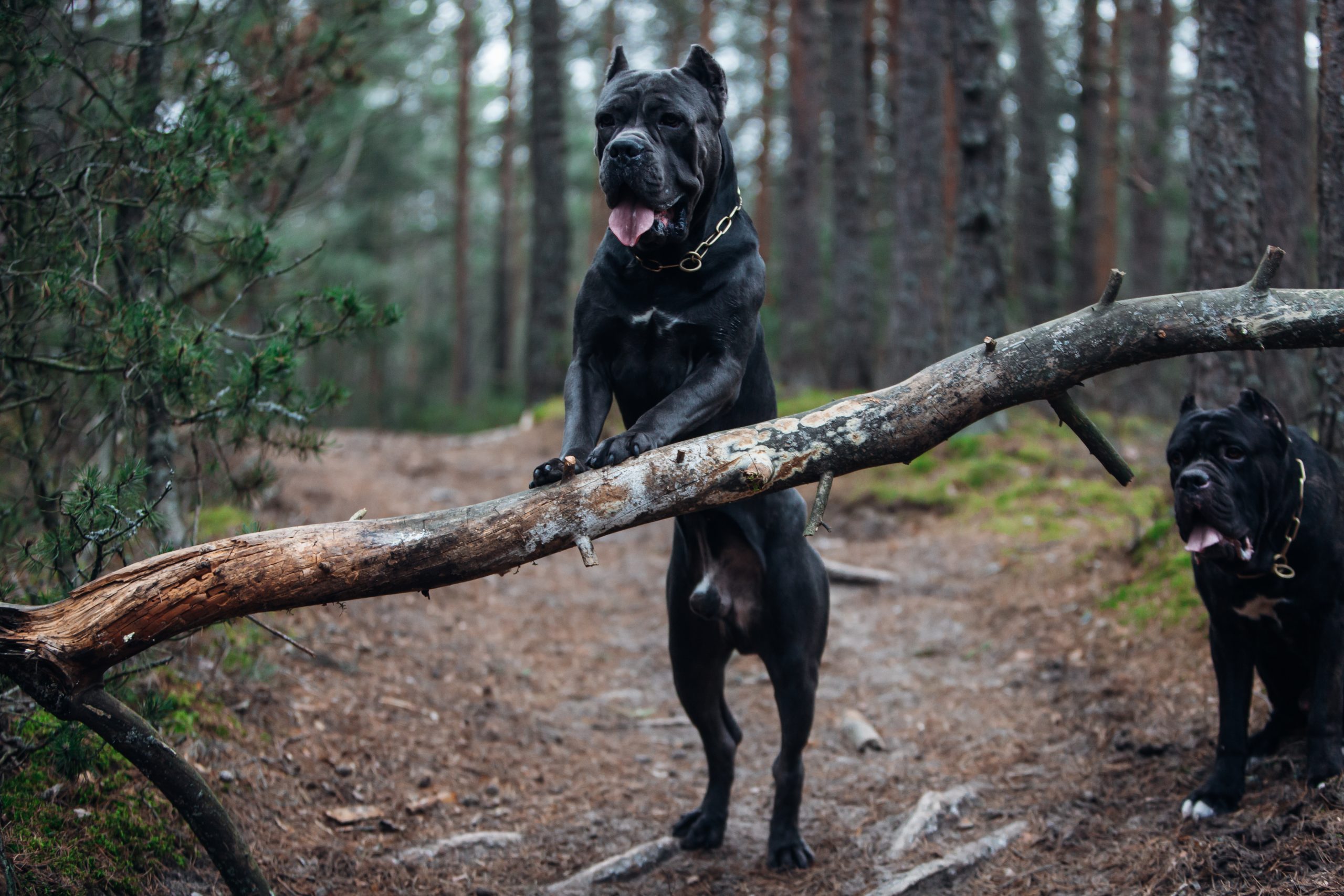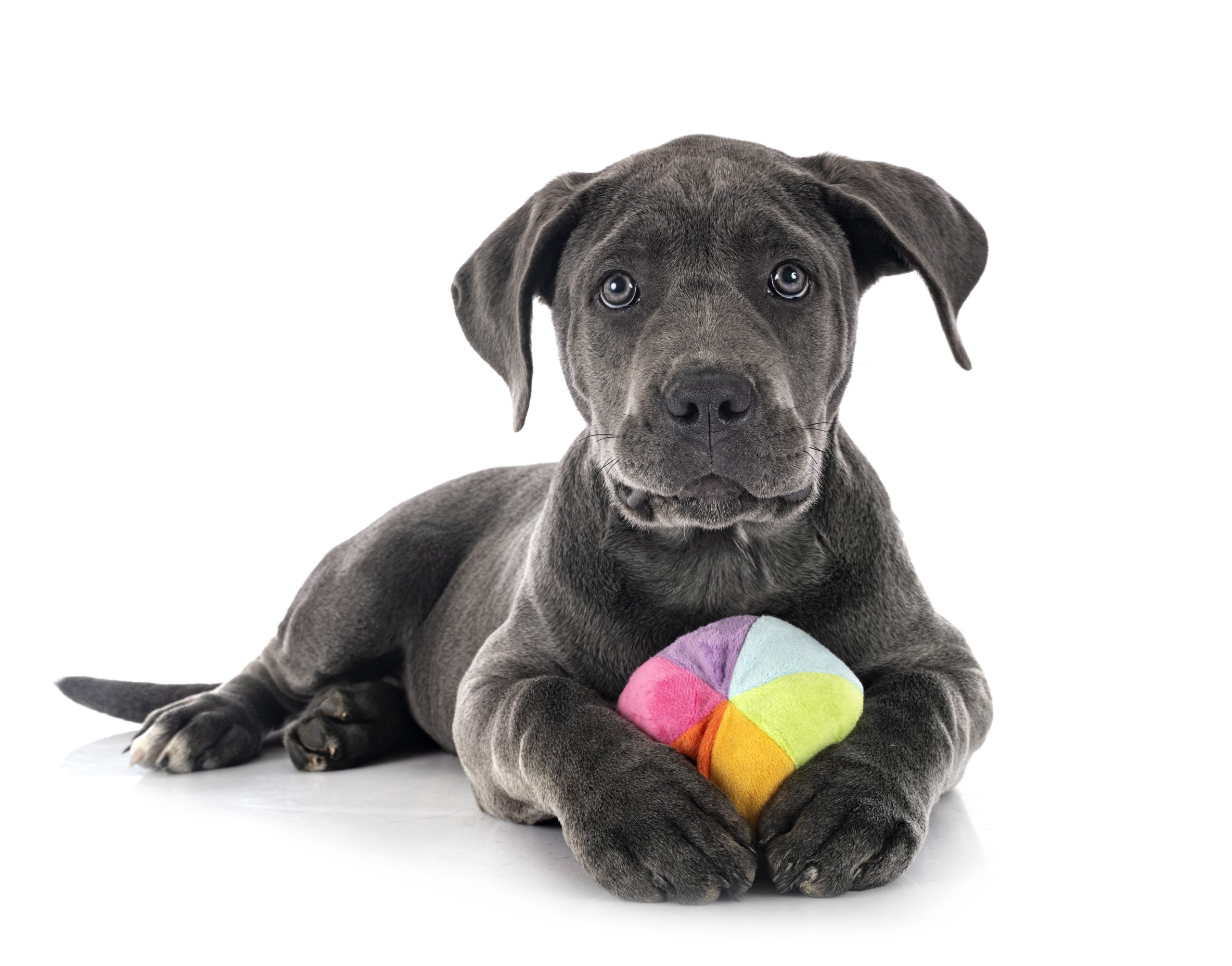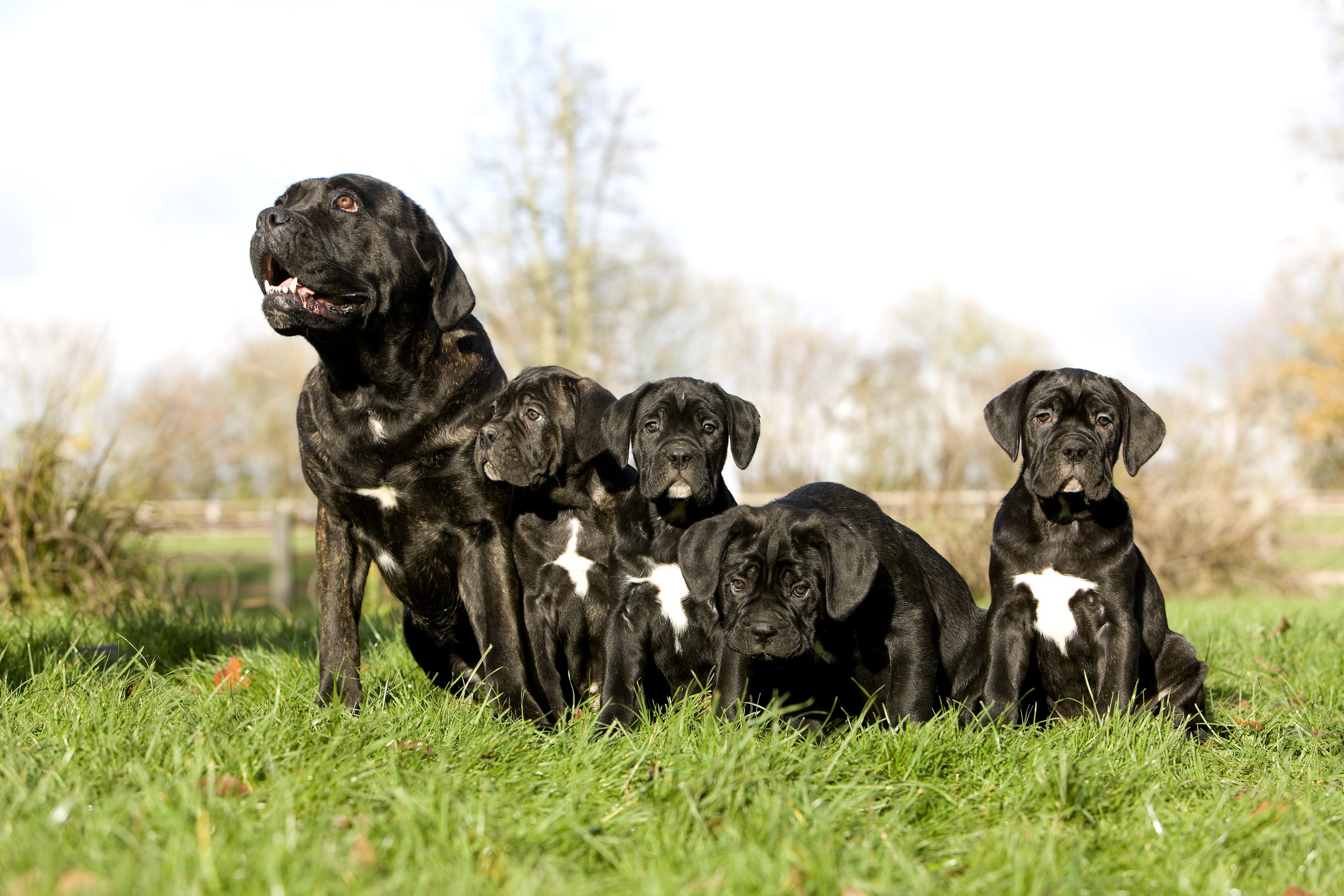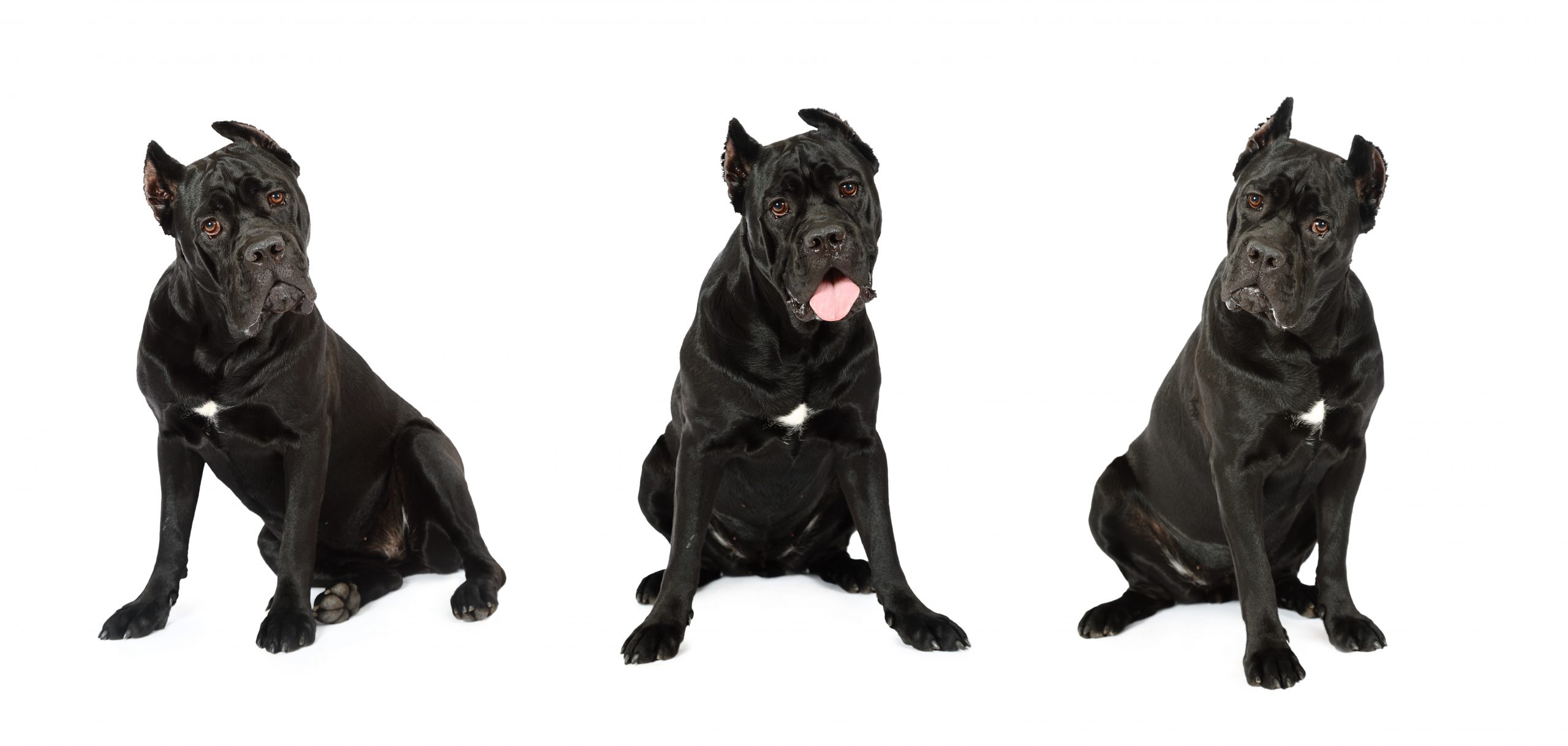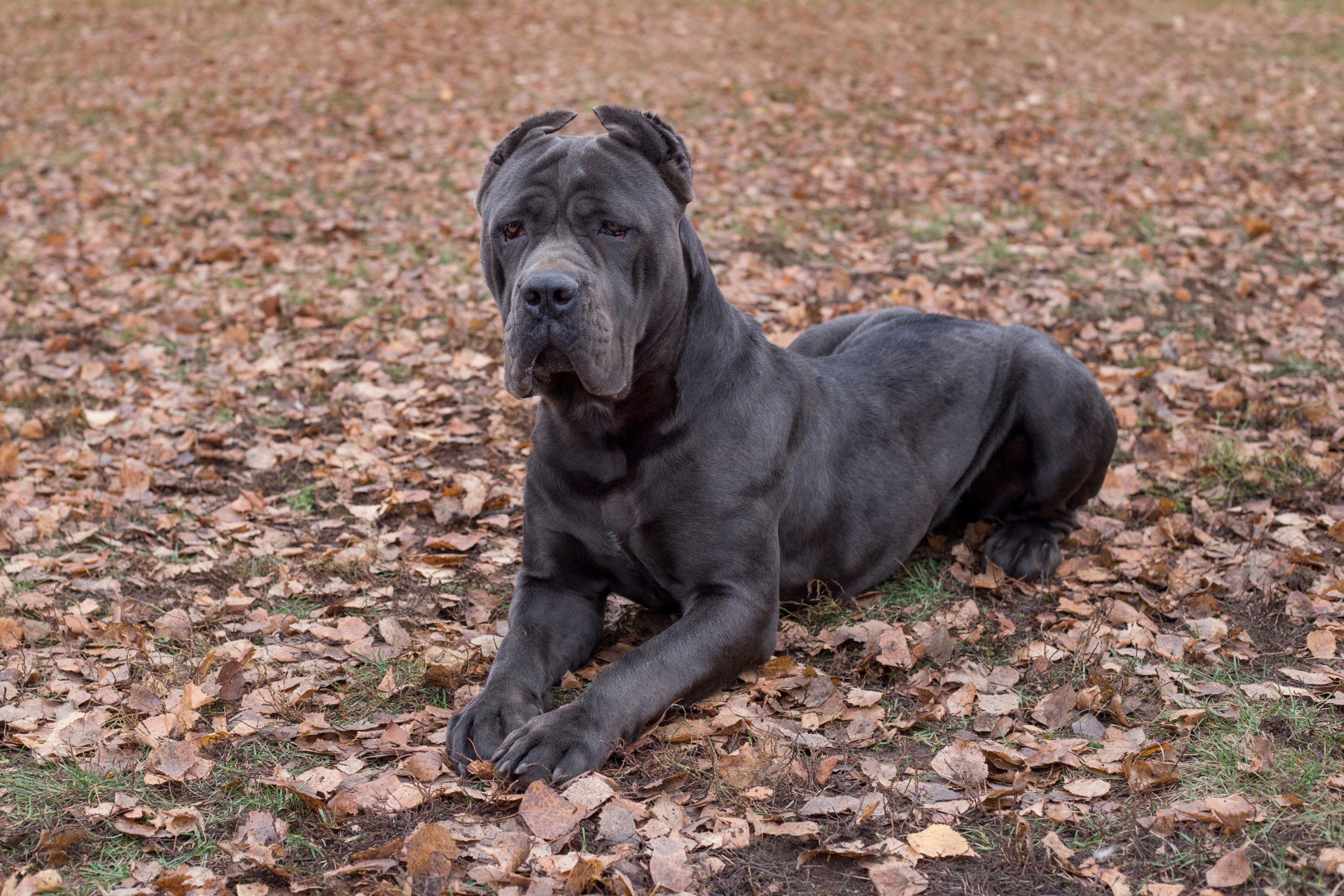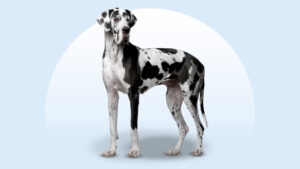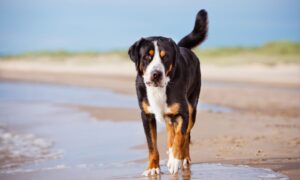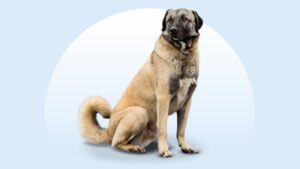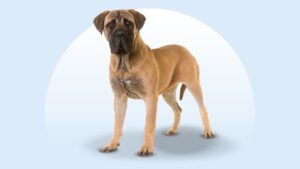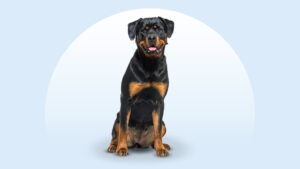Cane Corso
Updated June 4, 2025
Cane Corso
Updated June 4, 2025
If there’s a dog who could be mistaken for a member of your human family merely because of their size, it’s the Cane Corso. Weighing in at about 100 pounds, this Italian mastiff thrives with a pet parent who’s willing to share an unbreakable bond and give their bestie all the rigorous exercise they need.
Loyal, Serious, Smart
88–110 pounds
23.5–27.5 inches
9–12 years
Black, Gray, Fawn, Black Brindle, Gray Brindle, Red, Chestnut Brindle
These big Italian pups—with soulful eyes to boot—are loyal friends with a devotion to their people. The Cane Corso (pronounced KAH-neh KOR-so) is a driven and strong-willed breed, but they’re very affectionate with their family.
Grooming is a cinch with these giants, but training, as well as socialization, takes time. For that reason, Cani Corsi (the plural version of their Italian name) are best for pet parents with experience, patience, and persistence.
Cane Corso Characteristics
Cane Corso Appearance
Once bred to be guardians, the Cane Corso is a sturdy, muscular giant who funnily enough begins life as an adorably floppy-eared puppy. As they age, they take on a more royal look—picture the elegant gaze of nobility.
Their impressive stature has made Cani Corsi stars on Instagram, where pet parents with the time and energy to give these dogs the best life show off their majestic pups.

- Ears
The American Kennel Club (AKC) breed standard allows for the ears to be cropped or uncropped. Ear cropping involves surgically cutting away the outer part of a dog’s ear. Many countries and states have banned it for medical and behavioral reasons, and some veterinary groups, including the American Veterinary Medical Association (AMVA) oppose this cosmetic procedure. It’s best to leave your Cane Corso’s ears as nature intended—floppy and cute.
- Eyes
Cani Corsi have almond-shaped eyes that are dark brown, though lighter shades are possible in gray-muzzled dogs.
- Nose
Their big noses are flush with the muzzle, and they’re black or gray.
- Coat Length
Cani Corsi coats are short and stiff.
- Coat Color
Cane Corso colors include black, fawn, gray, and red. However, you could also have a brindle Cane Corso, in black, gray, or chestnut brindle. Dogs with lighter fur often have a gray mask over their eyes and muzzle.
- Tail
While the AKC standard still calls for Cane Corso puppies to have their tails docked, this practice is falling out of favor for welfare reasons, and you’ll now see Cani Corsi with long tails. Many groups, including AMVA, oppose tail docking, and several countries as well as U.S. states have banned the practice.
Cane Corso Temperament
You’ll never get bored with a Cane Corso around. They’re super smart and will react well to (and take seriously) all the training and socialization you do with them—but it is something you’ll need to devote significant time to.
Since they were originally bred as guardians, the Cane Corso temperament still has a natural inclination to be slightly suspicious of the mailperson, the pizza delivery guy, or the Golden Retriever next door—possibly anyone who’s not you. So, it’s important to teach these sensitive souls that most strangers are safe, whether two-legged or four-legged.
The good news is that they’re smart and learn quickly. And with members of their own family, the Cane Corso is likely to be exceptionally affectionate and embrace you as their own.
How to Care for a Cane Corso
Cani Corsi are low maintenance in the grooming department, which balances being fairly high maintenance where exercise and training are concerned. Their large size requires room to spread out, and their energy and intensity need plenty of fenced-in space for exercise.
Grooming
Training
Diet
Exercise
Environment
Cane Corso Health
The Cane Corso lifespan is 9–12 years, but they may experience a few health issues over that time.
- Bloat and gastric dilatation-volvulus (GDV): The large, deep chests of the Cane Corso make them susceptible to bloat, which can trigger gastric dilatation-volvulus, a life-threatening condition where the stomach rotates and twists on itself. To help prevent this condition, your dog can have a gastropexy surgery when they’re spayed or neutered; it tacks the stomach to the abdominal wall so it cannot twist.
- Epilepsy: Epilepsy is a seizure disorder that typically starts between 6 months and 5 years of age. While it can be managed with medication, there’s no cure. That said, dogs can still lead a long and happy life.
- Eye issues: Cane Corso dogs are prone to both entropion (in which the eyelid folds inward) and its opposite, ectropion (which causes the lower lid to fold outward). Another common problem is cherry eye, when the pink, fleshy part of the eye’s corner (the third eyelid) becomes swollen and bulges out. Discharge, squinting, cloudiness, bulging, and redness are all reasons to see your vet right away.
- Hip dysplasia: A skeletal condition common to large-breed dogs, hip dysplasia is a malformation of the ball and socket joint, resulting in looseness. The condition causes mobility issues, pain, and arthritis. Large-breed puppy dog food and proper joint care can be preventive.
- Obesity: With the already massive Cane Corso size, any extra weight will put added strain on their joints, leading to pain and mobility issues. A proper diet is crucial, as is daily exercise.
Cane Corso History
The Cane Corso traces its origins back thousands of years to a group of working breeds called Molossers, after an ancient Greek tribe that bred these big, Mastiff-type dogs to be guardians.
After the Romans conquered the Greek Islands, they brought these dogs back to Italy, where they produced the ancestors of today’s Cane Corso. The Romans originally used the Cane Corso as pireferi—essentially, they were some of the world’s first military service dogs.
After the Roman Empire dissolved in the 5th century, this Italian breed was used for hunting, herding, and even as guardians for farms. After two world wars, economic downturns, and an end to many family-owned farms, the breed nearly went extinct.
Fortunately, some surviving Cani Corsi were discovered in the 1970s, and a group of Italian dog fanciers set out to revive the breed. By the 1990s, Cani Corsi were making waves at dog shows across Europe.
They arrived in the U.S. in the late 1980s, and a few years later, the International Cane Corso Association was formed. The breed was officially recognized by the American Kennel Club in 2010.
Looking to make one of these pups a part of your family? Cane Corso puppies typically cost between $1,800 and $3,000. If you choose this route, pick a responsible breeder.
You can also adopt a Cane Corso via a rescue organization (such as Cane Corso Rescue, Inc.), ask your local shelter if they have any Cani Corsi or mixes, or search Chewy’s database of adoptable dogs in your area.
